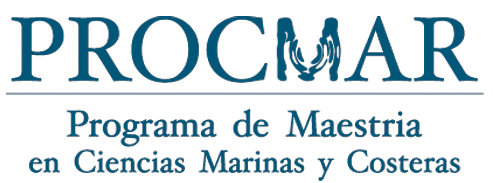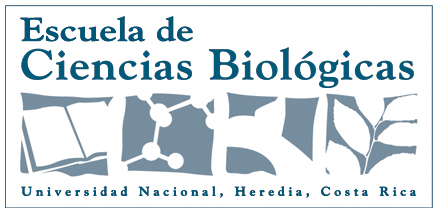|
ISSN: 1659-455X • e-ISSN: 1659-407X REVMAR REVISTA CIENCIAS MARINAS Y COSTERAS
Recepción 06 diciembre 2022 • Corregido 29 marzo 2023 First record of Mysidopsis gemina Price, Heard & Vargas, 2019 (Crustacea, Peracarida, Mysida, Mysidae) on the west coast of Mexico Primer registro de Mysidopsis gemina Price, Heard & Vargas, 2019 (Crustacea, Peracarida, Mysida, Mysidae) en la costa oeste de México José Carlos Hernández-Payán1,2* & Michel E. Hendrickx2 ABSTRACT Mysidopsis gemina Price, Heard & Vargas, 2019, a species of mysid shrimp recorded for Pacific Costa Rica, was collected in western Mexico on October 19th, 2022, at the entrance of the Gulf of California. This is the first record north of Costa Rica and it represents a distribution range extension to the north of approximately 13 degrees of latitude. A comparison of the diagnostic morphological features of the Costa Rican and Mexican specimens is given. Keywords: Mysidae, sandy beach, East Pacific, Gulf of California, new record. RESUMEN Mysidopsis gemina Price, Heard & Vargas, 2019, una especie de camarón misidaceo registrada para el Pacífico de Costa Rica, fue recolectada en el occidente de México, el 19 de octubre de 2022, en la entrada del golfo de California. Este es el primer registro al norte de Costa Rica y representa una extensión del intervalo de distribución hacia el norte de unos 13 grados de latitud. Se proporciona una comparación entre los caracteres morfológicos diagnósticos del material de Costa Rica y de México. Palabras clave: Mysidae, playa de arena, Pacífico Oriental, golfo de California, nuevo registro. Eastern Pacific mysid shrimp, also known as opossum shrimp, is poorly known south of California, and many species are known from a single locality or from a reduced area (Price, 2004; Hernández-Payán & Hendrickx, 2020). In the case of western Costa Rica, according to Price et al. (2019) only four species of Mysidae had been reported until 2019. Based on samples collected in 2010 and 2012 in two locations on the Pacific coast of northern Costa Rica (Puntarenas and Guanacaste), Price et al. (2019) described a new species of the genus Mysidopsis, M. gemina Price, Heard & Vargas, 2019. This species was recently collected during sampling operations along a sandy beach in western Mexico, representing the first record outside of Costa Rica, thus extending considerably its distribution range in the eastern Pacific. Samples were collected in the surf zone of a sandy beach on October 19th, 2022 with a small zooplankton net (mesh aperture 0.5 mm), preserved in a 70% ethanol solution and analyzed in the laboratory. Mature specimens of M. gemina were separated from the rest of the samples, examined for details, and illustrated using a Nikon SMZ-10A and Leica MZ6 dissecting microscope, and a Leica DM LS2 compound microscope equipped with a camera lucida. Illustrations were compared with the original description by Price et al. (2019). CL, carapace length. Material was deposited in the Regional Collection of Marine Invertebrates (CRIM), Unidad Académica Mazatlán, Instituto de Ciencias del Mar y Limnología, Universidad Nacional Autónoma de México, in Mazatlán, Mexico (ICML-EMU). Order Mysida Haworth, 1825 Family Mysidae Haworth, 1825 Subfamily Leptomysinae Czerniavsky, 1882 Tribe Mysidopsini Wittmann, Ariana & Lagardère, 2014 Genus Mysidopsis G. O. Sars, 1864 Mysidopsis gemina Price, Heard & Vargas, 2019 (Figures 1, 2)
Fig. 1. Mysidopsis gemina Price, Heard & Vargas, 2019 (ICML-EMU-13457). A-I, K, male (CL 1.62 mm, TL 4.86 mm). J, female (CL 1.76 mm, TL 5.28 mm). A, frontal part of cephalothorax in dorsal view; B, antennular peduncle; C, antennal peduncle and scale; D, maxilla; E, maxillule; F, thoracic endopod 1; G, thoracic endopod 8; H, uropods in dorsal view; I, telson in dorsal view; J, telson in dorsal view. Scales as indicated Fig. 1. Mysidopsis gemina Price, Heard & Vargas, 2019 (ICML-EMU-13457). A-I, K, macho (LC 1,62 mm, LT 4.86 mm). J, hembra (LC 1,76 mm, LT 5.28 mm). A, parte frontal del cefalotórax en vista dorsal; B, pedúnculo antenular; C, pedúnculo antenal y escala; D, maxila; E, maxilula; F, endópodo torácico 1; G, endópodo torácica 8; H, urópodos en vista dorsal; I, telson en vista dorsal; J, telson en vista dorsal. Escalas indicadas
Fig. 2. Mysidopsis gemina Price, Heard & Vargas, 2019 (ICML-EMU-13457). Male (CL 1.62 mm, TL 4.86 mm). A, Pleopod 1, endopod enlarged (arrow). B, pleopod 2. C, pleopod 3. D, pleopod 4, exopod terminal seta enlarged (arrow). E, pleopod 5. Scale as indicated Fig. 2. Mysidopsis gemina Price, Heard & Vargas, 2019 (ICML-EMU-13457). Macho (LC 1.62 mm, LT 4.86 mm). A, pleópodo 1, endópodo magnificado (flecha). B, pleópodo 2. C, pleópodo 3. D, pleópodo 4, seta terminal del exópodo magnificada (flecha). E, pleópodo 5. Escala indicada Mysidopsis gemina Price et al. 2019:2, Figs. 1-3. Material examined. Isla de la Piedra (23° 18ʼʼ N, 106 °41ʼʼ W), Mazatlán, Mexico, Oct 19, 2022, 1 male (CL 1.62 mm, TL 4.86 mm) and 1 female (CL 1.76 mm, TL 5.28 mm), about 1 m depth (ICML-EMU-13457). Comments. The specimens collected in the Mazatlán area fit well with the original description provided by Price et al. (2019). Diagnostic characters of M. gemina, as defined in the original description, were illustrated (Figs. 1, 2) to corroborate identification. Details are provided below for each of these characters. 1)Cephalothorax in dorsal view. Basically, similar to the illustration of Price et al. (2019: Fig. 1A). The carapace has an anterior margin produced into an acutely pointed triangular rostrum (Fig. 1A); cornea is large, globular and broader than eyestalk (Fig. 1A). 2)Antennular peduncle (Fig. 1B). It matches the description of Price et al. (2019: Fig. 1B): shorter than the antennal scale, 3 articles, article 1 subequal in length to article 3, and article 2 shorter than the other two. The male appendix masculina is also large and densely setose, as in the original description. Price et al. (2019) referred that the distal border of the peduncle possesses a dorso-medial lobe bearing two tooth-like processes; however, in the material examined there are 3 tooth-like, conical processes (Fig. 1B, arrow). 3)Antennal peduncle and scale (Fig. 1C). Proportion of peduncle and scale lengths are similar to the description of Price et al. (2009: Fig. 1C). The antennal scale is slender, lanceolated, extending well beyond the antennal peduncle, with the outer margin slightly concave, suture present on the distal edge. 4)Maxilla (Fig. 1D). The shape and proportions are similar to that reported by Price et al. (2019: Fig. 1G). The exopod is relatively narrow, with 8 plumose setae; the endopod is 2-articulated, the distal article is oval, with the 3 submarginal setae considerably longer than those described by Price et al. (2019: Fig. 1G), and the proximal article features a simple seta on the distal margin, as illustrated by Price et al. (2019: Fig. 1G); the sympod consists of 3 endites (Fig. 1D). 5)Maxillule (Fig. 1E). The form of this appendage and the number of setae matches the description of M. gemina (Price et al. 2019: Fig. 1F), including the 9 strong serrate setae on the outer lobe apex, and the inner lobe with two apical setae and one medial, short setae on outer margin. 6)Thoracic endopod 1 (Fig. 1F). The size, relative length of articles, and shape of the thoracic endopod 1 are similar to the original description by Price et al. (2019: Fig. 2A). This appendage is short and robust, as typical for the genus, ischium and merus are fused and equivalent to 2 x the carpus length, carpus with three serrate setae along the outer margin; the propodus is bent inward, with several simple setae and one serrate seta on the inner distolateral margin; the dactylus bears one strong, curved, terminal seta. 7)Thoracic endopods 3-8. The shape and size of thoracopod 8 (Fig. 1G) match the diagnosis of Price et al. (2019: Fig. 3A). The carpopropodus of thoracic endopods 3-7 (not illustrated herein) are 3-articulated, as in Price et al. (2019: Figs. 2C-G). 8)Uropods (Fig. 1H). Proportion and size of both the uropodal exopod and endopod are similar to what was illustrated by Price et al. (2019: Fig. 3I), with the exopod slightly longer than the endopod. The number (17) and robustness (strong) of the spine-like setae in the endopod inner margin is similar to the original description, and the series extends from the statocyst level to the apex of the endopod, as in the original description. 9)Telson (Fig. 1I, J). Price et al. (2019) reported a marked sexual dimorphism in the diagnostic characters. In both cases (male and female), the telson is short, wide, linguiform, and features a rounded to truncated apex. In the case of the female, the lateral margins present 17-20 short, robust setae increasing in length towards the tip, and the apex bears two pairs of subequal, long, stout spiniform setae (Price et al. 2019: Fig. 3G), all of these characters being similar to the Mexican material (Fig. 1I). The male telson in the original description possesses 20-23 short spiniform setae increasing in length towards the apex; the apex has three pairs of fairly stout spiniform setae (Price et al. 2019: Fig. 3H), and this is again similar to the Mexican material (Fig. 1J). 10)Pleopods of male (Fig. 2A-E) well developed. Pleopod 1 of the Mexican material (Fig. 2A) shares the 2-articulated endopod observed by Price et al. 2019 (Fig. 3D, E); the first article bears a rectangular pseudobranchial lobe with 5 setulose setae (as in the type), and a series of 9 simple setae (vs. 7-10 in the type material) on the anterior face; the second article is oval, with a long, simple terminal seta, as in the type. Pleopods 2-5 (Fig. 2B-E) are biramous, with endopod and exopod 8-articulated as in the original description (Price et al. 2019, Fig. 3F); the pseudobranchial lobes are well developed, larger than the pseudobranchia of pleopod 1, and bear 5 setulose setae each as in the type. Exopod of pleopod 4 of the type is described as bearing a long (equivalent to the length of the 4-5 terminal articles of the exopod), apical, spiniform seta, barbed on one margin (Price et al. 2019: 3F). This clearly matches the Mexican specimen (Fig. 2D), also bearing a proportionally similar spiniform seta, except it is barbed on both margins. Distribution. From the type locality, Playa Caldera (09° 92’ 75” N 84° 71’ 64” W), Puntarenas, Costa Rica, to Isla de la Piedra (23° 18” N, 106° 41” W), Mazatlán, Mexico. The lack of records between Costa Rica and Mexico is most likely due to lack of samplings combined with little attention paid to these small, “shrimp-like” organisms. Further sampling will certainly demonstrate that M. gemina is a well distributed, shallow-water species in the region. Habitat. The material from Costa Rica was collected from sandy beaches in depths of 0.5 to 1.0 m. The Mexican material was collected in the surf zone of a sandy beach, in about 1.0 m depth. Final Remarks. According to Price et al. (2019: Table 2), three distinctive characters are found separately or in combination in nine species of Mysidopsis, setting these apart from the other 42 nominal species of the genus: sexually dimorphic telson (4 species); male pleopod 1 with biarticulated endopod (6 species); and enlarged pseudobranchial lobes (pseudopodia) (5 species). Of these species, only M. gemina possesses these three characters (Price et al. 2019: Figs. 3G, H, D-F) which were also observed in the Mexican material (Figs. 1I, J, 2A-E). The authors would like to thank José Salgado-Barragán and Karl Edward Velázquez-Ornelas for their help in collecting the specimens. Hernández-Payán, J. C. & Hendrickx, M. E. (2020). Revaluación de la fauna de Lophogastrida y Mysida (Crustacea: Peracarida) del Pacífico mexicano. Geomare Zool., 2(3), 49-59. Price, W. W. (2004). An annotated checklist for the order Mysida (Crustacea: Malacostraca: Peracarida) from the Pacific coasts of the Americas (Alaska to Chile). In M. E. Hendrickx, (Ed.), Contributions to the study of East Pacific Crustaceans, 3 (pp. 53-77). Universidad Nacional Autónoma de México, México D. F. Price, W. W., Heard, R. W. & Vargas, R. (2019). Mysidopsis gemina n. sp. (Crustacea: Mysida: Mysidae) from the northern Pacific coast of Costa Rica. Nauplius, 27, 1-12. https://doi.org/10.1590/2358-2936e2019016 1 Postgrado en Ciencias del Mar y Limnología, Universidad Nacional Autónoma de México, Av. Universidad 3000, Ciudad Universitaria, Coyoacán 04510, Ciudad de México, México. michel@ola.icmyl.unam.mx; jose_carlos_11@hotmail.com* ORCID: https://orcid.org/0000-0003-1483-1289 2 Unidad Académica Mazatlán, Instituto de Ciencias del Mar y Limnología, Universidad Nacional Autónoma de México, A. P. 811, Mazatlán, Sinaloa, 82000, México. ORCID: https://orcid.org/0000-0001-9187-6080 |
/revmar15-1.jpg)
/art-03-imag-01.png)
/art-03-imag-02.png)




